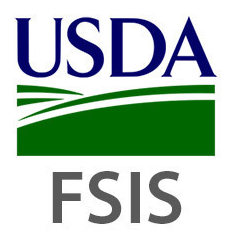The U.S. Department of Agriculture (USDA) Food Safety and Inspection Service (FSIS), in a letter authored by Acting Deputy Under Secretary for Food Safety Carmen Rottenberg, is clearing up faulty information that was disseminated last year regarding poultry sampling test results.
The information was released in March 2017 in response to a Freedom of Information Act request. The information, which FSIS calls “unconfirmed, preliminary test results for samples taken from poultry”, continues to be passed around as truth. USDA says this information is false.
The agency is specifically referring to a Consumer Reports story “claiming that the poultry and meat you purchase in the grocery store and feed your families could contain harmful drug residues.”
“This story is sensational and fear-based infotainment aimed at confusing shoppers with pseudoscience and scare tactics. Consumer Reports admits in their closing paragraph that the real agenda behind this piece is to convince Americans to eat less meat. Shame on Consumer Reports for attempting to advance a rhetoric that lacks scientific support or data, at the expense of American producers and the 9,000 food safety professionals who ensure the safety of meat and poultry in this country every day.”
FSIS goes on to explain in detail how their meat and poultry sampling process works.
USDA has been ensuring the safety of meat and poultry since 1906, with inspectors, scientists, and experts making food safety determinations daily. FSIS has a rigorous drug residue testing program and has been conducting drug residue testing since 1958. When FSIS tests for residues, USDA inspectors collect meat and poultry samples at multiple points in the process, including in the final packages, before they are shipped to grocery stores. The samples are sent to FSIS labs, where we test for more than 200 veterinary drug and chemical residues as well as numerous harmful pathogens. Our intensive testing process includes a preliminary test, or screening test, followed, when positive, by confirmatory testing. The screening instrument very often produces a response, which is why the agency completes the screening process, using controls and other evidence, to determine if the responses are confirmed and reproducible. The results of this initial screen, without the further testing layers, are the data that was released in error. FSIS scientists spoke with Consumer Reports multiple times to explain this information, but Consumer Reports scientists failed to evaluate all the scientific results and methods objectively.
FSIS performed the complete screening and testing process on all the samples represented. The final, confirmed and validated test results show are that there were no drug residues in the chicken. If violative drug residues are found in any meat or poultry product, FSIS does not allow that product to be sold for human food.
In fact, all meat and poultry products that are being tested for drug residues are not allowed to leave the company’s control until FSIS labs determine that the product is safe and wholesome. If samples are violative, the company is not permitted to ship any of these meat and poultry products to the grocery store.
FSIS also revealed that two of the consulting scientists featured in the Consumer Reports story were former senior managers at FSIS.
Despite the spread of inaccurate information, FSIS says the agency will continue to share its data and results with the public in the name of transparency.
See Rottenberg's letter in its entirety at USDA.FSIS.gov.
Sign up for Food Safety Magazine’s bi-weekly emails!
Subscribe to our podcast: Food Safety Matters!




